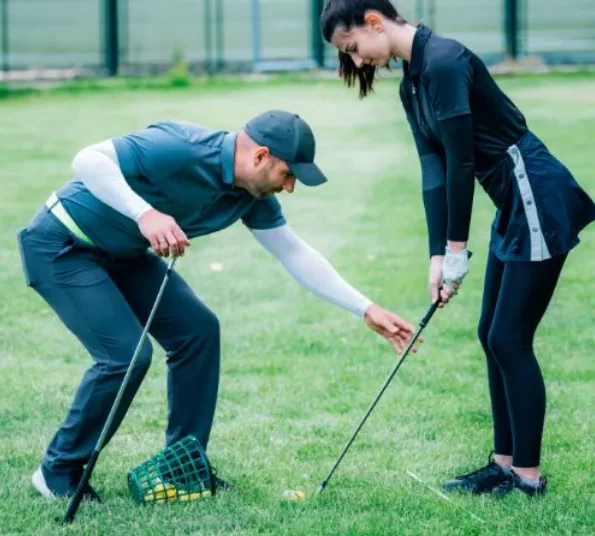Putting may look simple, but for new golfers, it’s often the difference between a good round and a frustrating one. While powerful drives and precise iron shots get plenty of attention, most strokes on the scorecard happen on the green. By focusing on a few key techniques, you can sharpen your putting skills and lower your scores. Here are nine practical tips to help beginners putt with more confidence and consistency.
1. Start with a Balanced Grip and Stance
A reliable putting stroke begins with a solid foundation. Hold the putter lightly—firm enough to stay in control but not so tight that your hands become tense. Position your feet about shoulder-width apart to create a stable base. This setup encourages a smooth, controlled stroke that’s easy to repeat.
2. Get Your Eyes Over the Ball
Proper eye alignment is crucial for seeing the line correctly. Position your eyes directly over or slightly inside the ball to improve your ability to read the path to the hole. This small adjustment helps ensure your stroke follows the intended line.
3. Focus on a Pendulum-Like Stroke
One of the biggest mistakes beginners make is relying too much on their wrists. Instead, let your shoulders guide the movement, creating a smooth, pendulum-like stroke. This technique helps maintain control, keep the putter face square, and produce more consistent rolls.
4. Learn to Control Distance
Even a perfectly aimed putt won’t drop if the speed is off. Spend time practicing putts of various lengths to build a sense of how hard to hit the ball. Distance control comes from feel, and it’s developed through repetition. Mastering this skill will cut down on frustrating three-putts.
5. Read the Green Carefully
No two putts are ever the same. Before you take your stroke, study the slope, grain, and any subtle breaks between your ball and the hole. Observing from multiple angles can help you better understand how the ball will roll, allowing you to make smarter reads and sink more putts.
6. Use Drills to Build Confidence
Consistent practice is key to becoming a reliable putter. Incorporate drills into your routine, starting with short putts to build confidence and accuracy. Gradually move farther away as your comfort level grows. Practicing with purpose will help turn your stroke into a dependable part of your game.
7. Find a Putter That Suits You
Putters come in different shapes, lengths, and styles, and the right fit can make a noticeable difference. Try out various models to find one that feels comfortable and inspires confidence. A professional fitting session can also help you choose a putter that complements your natural stroke.
8. Develop a Pre-Putt Routine
Great putters are consistent in their setup and execution. Establish a routine that helps you focus, whether it’s taking a couple of practice strokes, visualizing the line, or aligning the putter face in a specific way. A reliable routine reduces nerves and creates a sense of rhythm.
9. Stay Composed Under Pressure
Putting can be nerve-wracking, especially when a short putt determines your score. Learning to stay calm is just as important as your technique. Take a deep breath, trust your preparation, and commit to the stroke. A relaxed mindset leads to better results when it matters most.
Final Thoughts
Putting is often where beginners can make the fastest improvements. By refining your grip, stance, and stroke, while developing a feel for distance and green reading, you’ll quickly see your scores drop. With regular practice and a composed approach, your time on the greens can become one of the most rewarding parts of the game.













